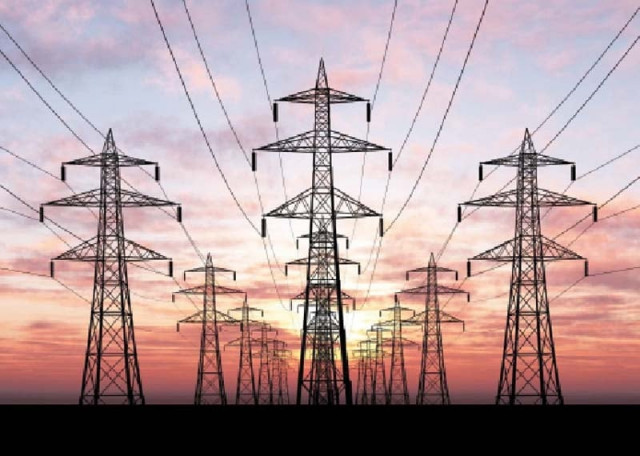Govt plans new 1,200MW plant
Solar power plant to be built despite surplus electricity in country

The government has decided to set up another power plant of 1,200 megawatts in the public sector despite surplus electricity – in a move that may increase the share of renewable energy but will further augment power sector problems.
The federal government is set to approve the project with a cost of Rs6.2 billion for acquiring land for the installation of a 1,200MW solar power plant in Layyah district of southern Punjab. The cost of the plant will be in addition to the land cost.
Official documents suggest the purpose of adding another 1,200MW to over 42,000MW generation capacity is to displace the expensive fossil fuel-based power generation. However, the decision to add more capacity to replace the existing ones may not help reduce the idle capacity payments even if no such payments are made to solar plants.
The 1,200MW solar plant will keep other plants of similar capacity idle, making them to claim payments despite producing no electricity.
For this fiscal year, the government has estimated roughly Rs2.1 trillion in idle capacity payments for which consumers are charged Rs18.3 per unit in additional cost.
The development comes at a time when the government is trying hard to convince the owners of five power plants to voluntarily shelve their power purchase contracts. The country's average electricity consumption ranges from 22,000MW to 24,000MW, which is far lower than the available capacity, resulting in idle payments.
Planning Minister Ahsan Iqbal said on Thursday that the surplus electricity was because of variation in consumption in summer and winter seasons.
However, Iqbal, as Deputy Chairman of the Planning Commission, is also poised to take up the federal government-funded project of Rs6.2 billion for the acquisition of land for the installation of the power plant. The scope of work involves the acquisition of 4,827 acres of land.
The original PC-I of the project was approved by the Central Development Working Party in October 2022 with an estimated cost of Rs2.7 billion for land acquisition. But now the price has multiplied due to per-acre increase in land cost from Rs500,000 to Rs2.4 million.
"Electricity and gas shortages are considered to be the root cause of constrained production activities in a number of industries," thus there is a need to install a new project, according to the energy ministry.
It added that higher cost of electricity generation thus builds up circular debt on the one hand and escalates the manufacturing cost of local products on the other hand, damaging the export industry.
The ministry is of the view that thermal generation still has a significant share in electricity production. Owing to the low running capacity of oil refineries, the supply of fuel for thermal generation is also affected, thus reducing the generation capacity in peak demand periods.
The government has decided to construct various megaprojects of solar power generation including the 1,200MW Layyah project.
However, the government is adding more projects in its energy portfolio despite a limited fiscal space. The National Transmission and Despatch Company is currently executing about 62 projects, which has put pressure on NTDC's equity arrangement capabilities.
NTDC has proposed four new projects costing over Rs400 billion for financial year 2024-25, requiring annual equity arrangement of over Rs20 billion for these projects. This entails a thorough examination of NTDC's financial standing and capabilities to manage such a substantial financial burden effectively through equity.
Furthermore, the 134% increase in cost needs a review as the high cost of land will have an impact on end-consumer tariff.
The circular debt remains a major issue for the power sector viability. Despite increasing electricity prices up to 51% in July, the government has projected that the circular debt could jump to a new record high of Rs2.8 trillion by the end of current fiscal year without any injection of budgetary subsidies.
However, the Ministry of Finance will inject subsidies of Rs381 billion to bring down the debt to Rs2.42 trillion. Yet, there will be a net addition of Rs36 billion to the debt. The Power Division, however, has a poor record of achieving end-June debt reduction targets.
The Power Division missed last fiscal year's circular debt reduction target by Rs83 billion despite massively increasing prices.
A draft of the prime minister's so-called Home-Grown Economic Reform Agenda states that "cumulative poor decisions with long-term consequences and unwillingness to tackle structural issues in markets have led to high energy prices".
It added that a key cause is poor past contracting, inefficiencies and incapacity to recover costs that have led to around $8 billion worth of circular debt in the electricity sector and $6 billion debt in the gas sector.
The draft plan showed that limited reliability has been estimated to cost another $8 billion a year. However, the plan states, "The country has surplus power generating capacity, and more capacity will be added in the future".
Under the new plan, the government is moving towards a competitive market for electricity, through the Competitive Trading Bilateral Contracts Market. Such a structure would allow bulk buyers and sellers to agree on a market price, rather than being beholden to a uniform price, it added.





















COMMENTS (7)
Comments are moderated and generally will be posted if they are on-topic and not abusive.
For more information, please see our Comments FAQ